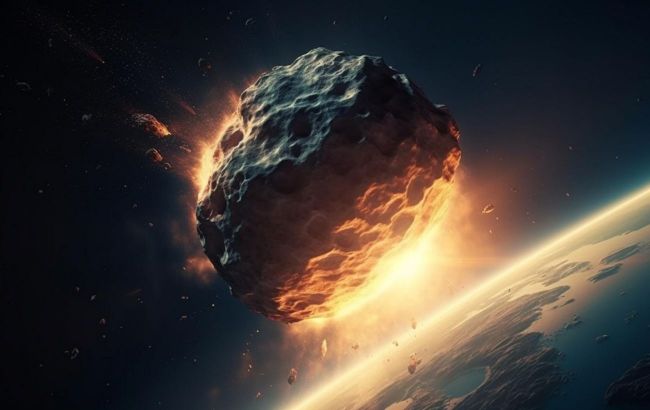300-meter asteroid named Apophis to approach Earth: What is known
 What is known about asteroid Apophis (photo: Freepik)
What is known about asteroid Apophis (photo: Freepik)
NASA's space scientists continuously study the trajectories of asteroids that potentially pose a threat to Earth. One of the dangerous bodies is Apophis - a 300-meter asteroid with a mass of about 20 million tons. Previously, it had the highest rating of collision threat with Earth on the Torino Scale.
RBC-Ukraine reports on whether there is indeed a threat of collision with Apophis, citing a video from the channel of the head of the laboratory at the Main Astronomical Observatory of the NAS of Ukraine, Ivan Kryachko, All about the Universe on YouTube.
During the preparation of the material, the source Wikipedia was also used.
Is asteroid Apophis a threat to humanity
On April 13, 2029, asteroid Apophis will pass by Earth at a distance of 32,000 km. This is 12 times closer than the Moon. This distance is even smaller than the geostationary orbit height of our satellite.
"Astronomers assure that this event will be safe for Earthlings because all known asteroids or comets will not collide with Apophis before it passes by Earth. That is, its orbit is unlikely to be redirected towards our planet," explains Kryachko.
He also adds that scientists do not predict any collisions with Earth in the next 100 years.
What is known about this asteroid
Apophis was discovered in 2004. The asteroid was named after Apep (pronounced Apophis in ancient Greek) - the ancient Egyptian god of chaos who resides in eternal darkness and tries to swallow the sun god Ra at night.
Scientists have determined that Apophis will come closest to Earth on April 13, 2029, and again on April 13, 2036. According to initial calculations, this asteroid had the highest impact threat rating on the Torino Scale. However, after additional research, the threat level was downgraded from four to zero.
However, in 2029, a space mission named OSIRIS-REx is scheduled to be sent to the asteroid.

The orbit diagram of Apophis (in blue) and Earth (in white) (photo: Wikipedia)
Consequences of Apophis colliding with Earth would be significant
NASA scientists have calculated that the amount of energy released in such an event would be 500 megatons. For comparison, the Tunguska meteorite released energy equivalent to 10-40 megatons, the most powerful nuclear weapon test yielded 50 megatons, and the eruption of the Krakatoa volcano released 200 megatons of energy.
The consequences of a collision with Apophis depend on its density, as well as the location and angle of impact. The collision would result in devastation in the impact area covering up to 1000 square kilometers, with potentially numerous human casualties. However, the asteroid's impact would not cause global consequences similar to a "nuclear winter."
Earlier, we discussed which planets will survive when the Sun dies.

